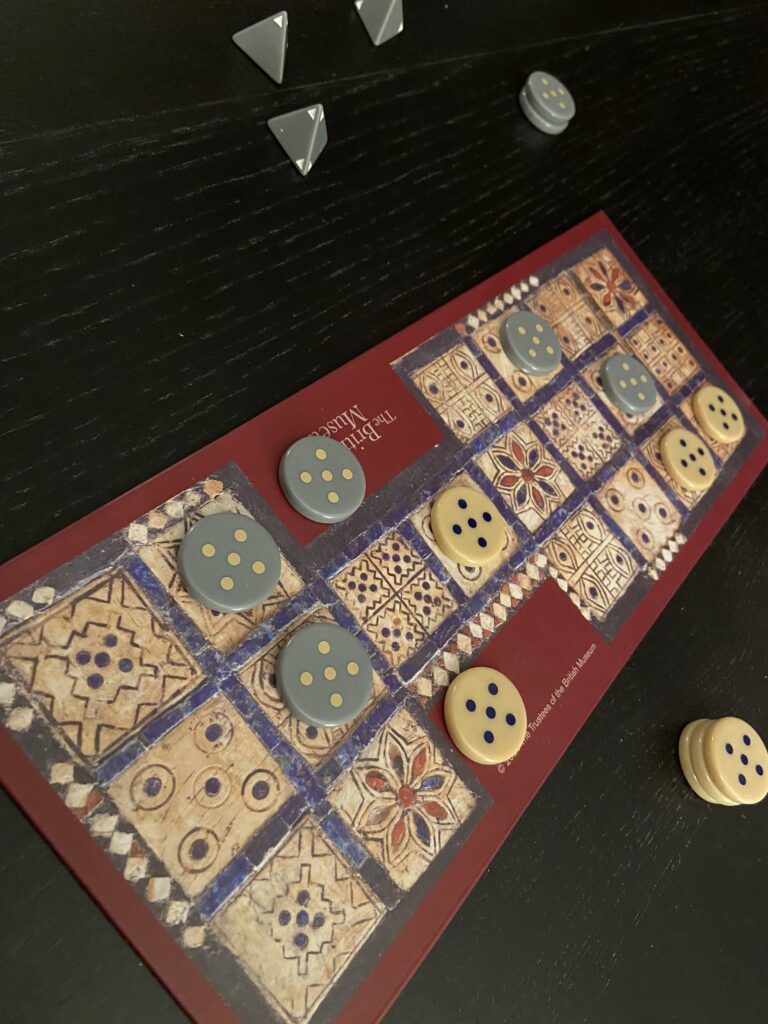This is a series of posts where I play 100 boardgames.

Game: The Royal Game of Ur
Designer: Unknown
Year: 2500 BC
Country: Sumeria
Publisher: The British Museum
Let’s go old school!
The Royal Game of Ur is a boardgame played in ancient Mesopotamia and which spread all over the world. The version I have is published by the British Museum and is a reconstruction of the game mechanics devised by the curator Irving Finkel based on surviving materials. It’s hard to say whether the game was originally played like the copy I have but it’s still wonderful to imagine this same game having been played across over four milleniae.
It’s a two player game where the goal of each player is to move a pile of tokens from the start of the race to the finish. The complication is that the middle part of the racetrack is shared and you can sabotage your opponent, pushing their tokens off the board. The British Museum version of the game uses tetrahedral dice of an unusual configuration, letting each dice give a result between one and zero. You roll four dice, giving a range of 0-4.
The players take turns rolling the dice, moving a token the indicated amount of squares. There are also special squares which allow for another roll.
The key tactical choice is whether to enter your tokens into the central, shared part of the racetrack. Often, being first is bad because it means your opponent can come from behind you and kick you off the board. This means that both players amass tokens in preparation for entry, then try to time their moves so that they come immediately behind their opponent.
The Royal Game of Ur was significantly more fun than I expected it to be. It works well and is simple to play with a complexity equivalent to a well designed children’s boardgame. The core mechanic is fundamentally functional and enlivens a genre, race games, which has historically been glutted with substandard junk.